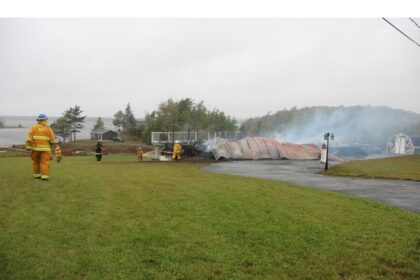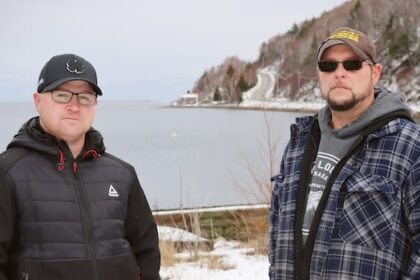Article contentThe closest reactor to Halifax is the Point Lepreau Nuclear Generating Station in Maces Bay, N.B. Article contentIS NUCLEAR POWER UNDERGOING A RENAISSANCE? Article content The Point Lepreau nuclear station in New Brunswick, seen in this undated photo. – Moncton Times & TranscriptArticle contentThe International Atomic Energy Agency projects that global nuclear capacity could double by 2050 and perhaps grow by more in Canada, which in 2023 joined a band of other countries in committing to tripling its nuclear energy output by that same date. Article contentMultiple factors are behind the resurgence.Article contentGovernments around the world are looking for reliable energy solutions amid growing geopolitical instability. Article contentWhat is more, nuclear power plants produce very little greenhouse gas emissions, making them a vital tool in reducing carbon footprints and mitigating climate change. And nuclear-generated power is also dependable and predictable, something that solar and wind is not. Article contentAnother thing in nuclear power’s favour: new reactor innovations, including small modular reactors (SMRs) that offer the potential for safer, more efficient and potentially less costly power generation. Article contentArticle contentWHAT HAS THIS ALL THIS DONE TO URANIUM? Article contentThe surge in demand for nuclear power has meant that the price of a pound of uranium has climbed from $33.50 in 2020 to a peak of $144.16 last year, before cooling off to around $78 this May. Article contentThat, in turn, has triggered a global uranium exploration boom. In Canada, which aspires to be the world’s biggest uranium producer, exploration activity has soared from $67 million in 2020 to $308 million in 2024. Article contentWHERE IS THE EXPLORATION TAKING PLACE? Article contentCanada’s uranium hotbed is Saskatchewan, which has a geology uniquely suited to uranium deposit formation. In the rest of the country, exploration has thus far been modest. British Columbia has a ban on uranium exploration in place. Quebec has a moratorium, pending an ongoing environmental review. Article contentWHAT ABOUT NOVA SCOTIA? Article content Premier Tim Houston was all about cost of living issues during the election campaign, but since winning uranium and other forms of mining seem to be the apple of his eye. – Francis Campbell Photo by Ryan Taplin /The Chronicle HeraldArticle contentUranium exploration used to be banned in this province, too. The prohibition stemmed from global factors that mirror the situation today: an uncertainty about energy supply that left many countries desperate to reduce dependence on fossil fuels. Article contentArticle contentNuclear power in the late 1970s was viewed as a clean alternative to oil and coal. The price of uranium, as a result, skyrocketed. Article contentWhen the mining companies came calling, the Nova Scotia government was happy to allow claims and issue exploration licences for areas thought to contain uranium-rich granite. Article contentBut, eventually, public knowledge grew about the dangers of uranium mining — that it contaminated water, damaged farmland and wildlife habitat, and emitted radon gas that was linked to cancer and birth defects — and radioactive tailings. Article contentSo, inevitably, the pushback grew, too.Article contentIn 1981, John Buchanan’s Progressive Conservative government placed a moratorium on uranium exploration and mining in the province. Article contentAn inquiry into the subject launched the next year heard 242 briefs from Nova Scotians, 211 of which were opposed to uranium mining.
JOHN DeMONT: It’s deja vu all over again for uranium brouhaha in Nova Scotia











